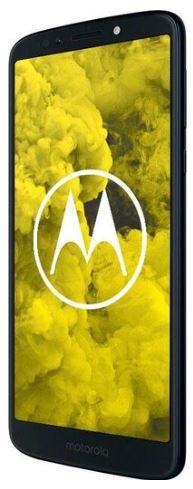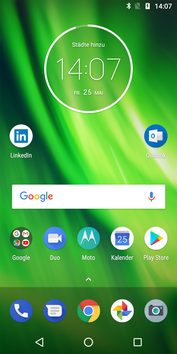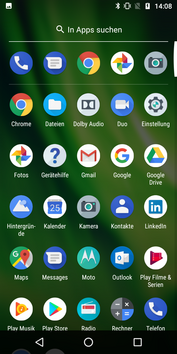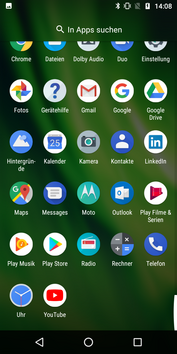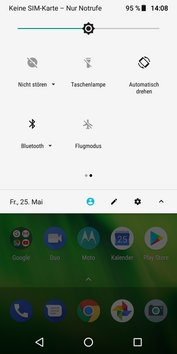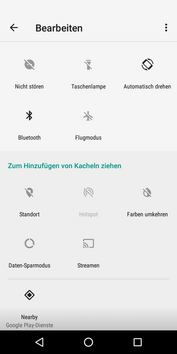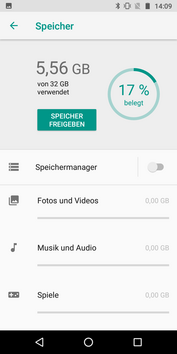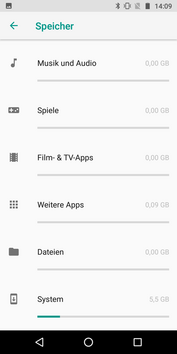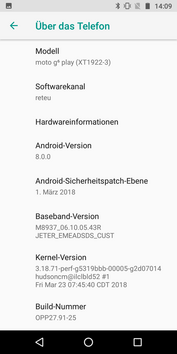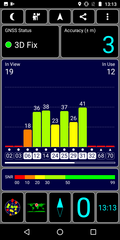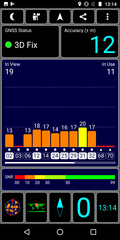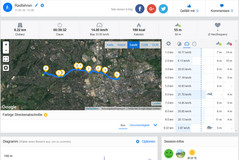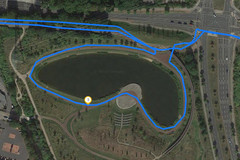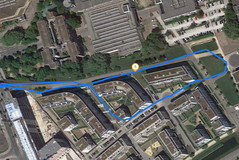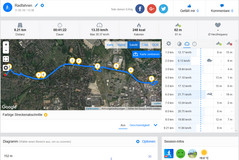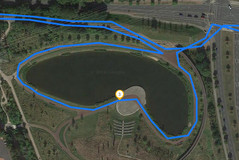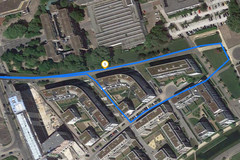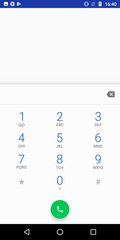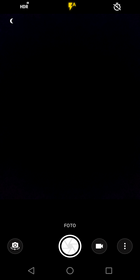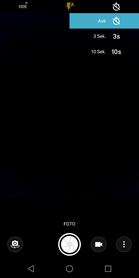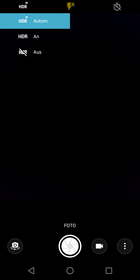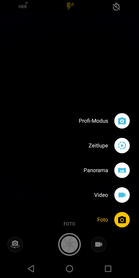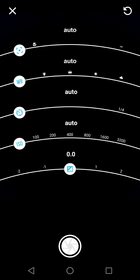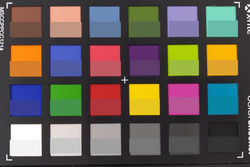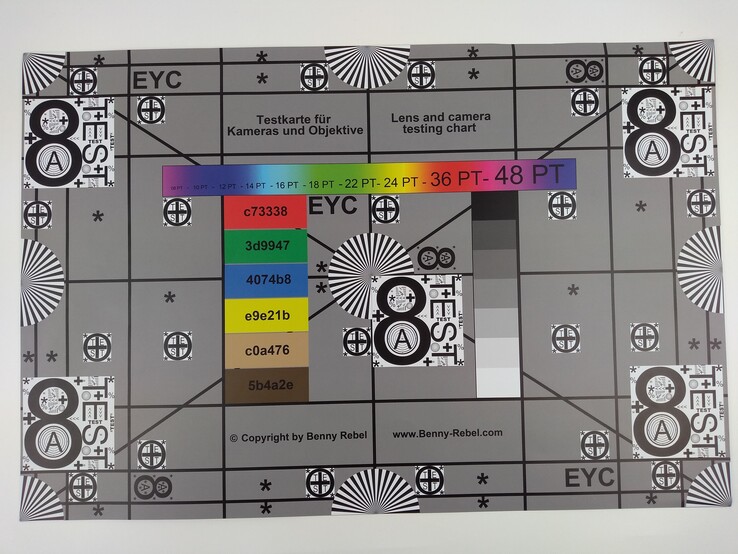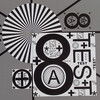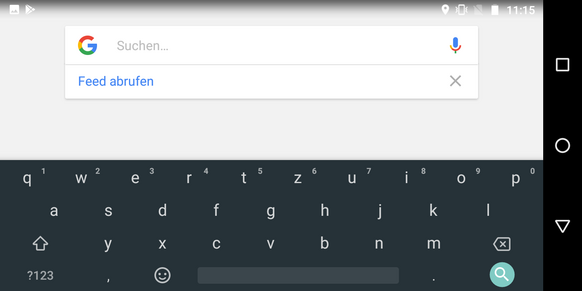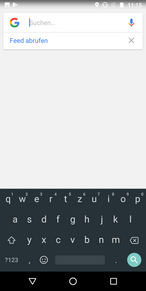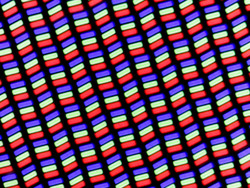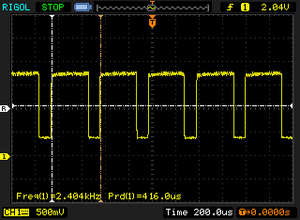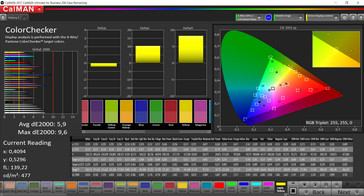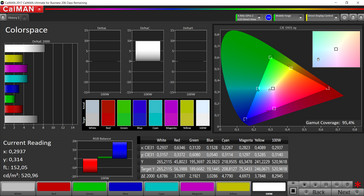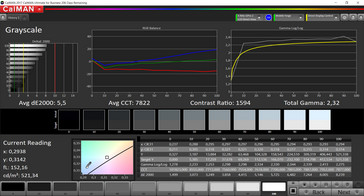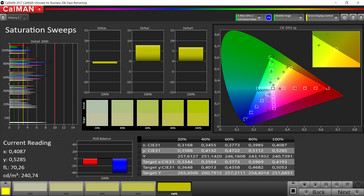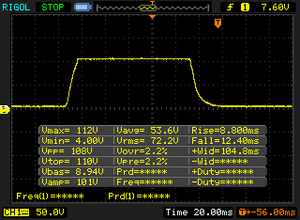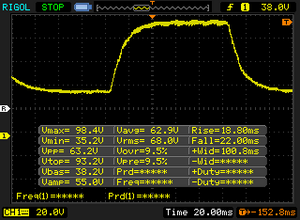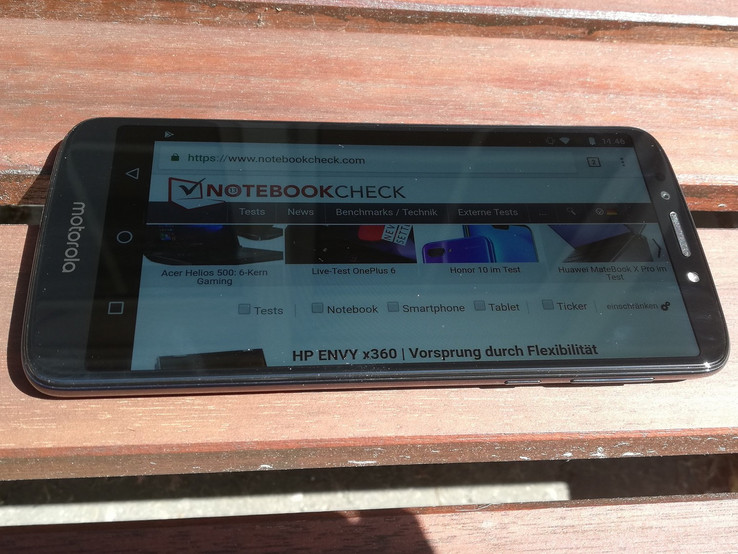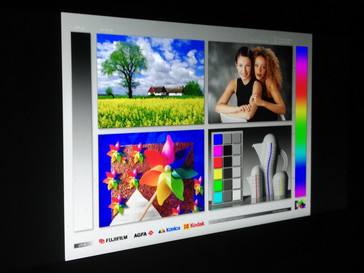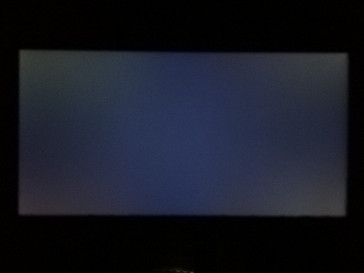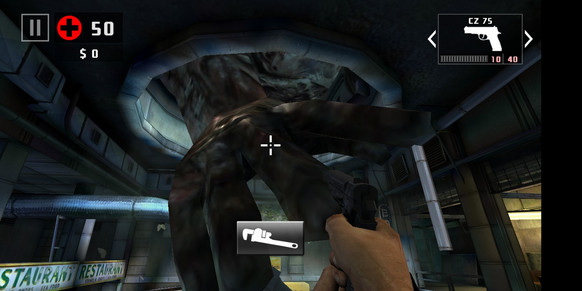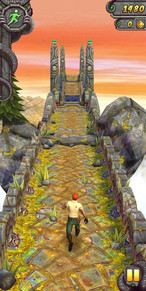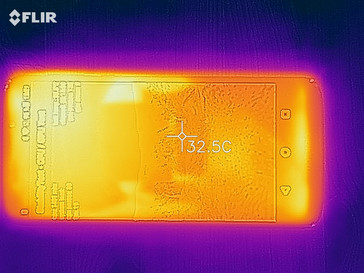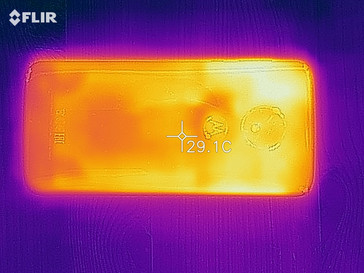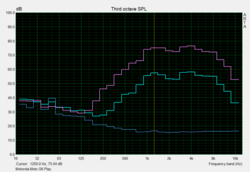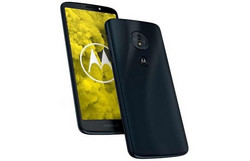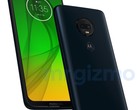Motorola Moto G6 Play Smartphone Review
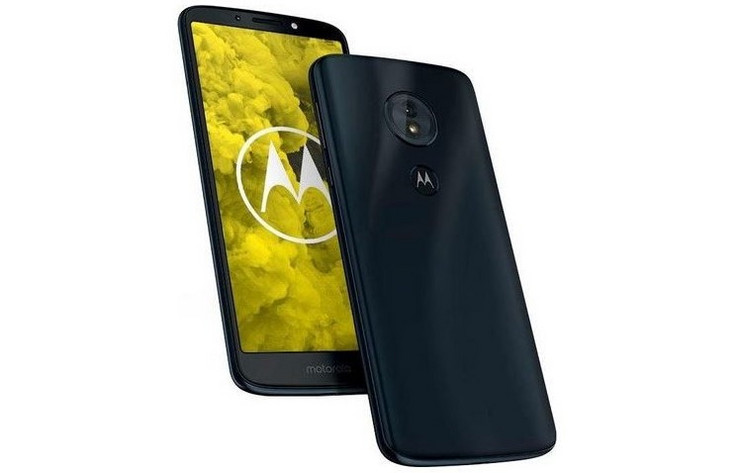
Shortly after introducing a special edition of its Moto G5 dubbed Moto G5s in late 2017, Motorola has proceeded to introduce its 6th generation Moto G series. In addition to the Moto G6, which can be considered the series’ standard vanilla model, the other two variants are the better equipped Moto G6 Plus and the more affordable Moto G6 Play. Today, we are reviewing the latter. It is powered by a Qualcomm Snapdragon 430 with integrated Adreno 505 GPU, and at a price of slightly over $200 comes with 3 GB of RAM and 32 GB of eMMC flash storage. It runs the most current version of Android, 8.0 Oreo.
As we know competition in this segment is more than fierce, and the Moto G6 Play faces a large number of worthy competitors. For the sake of our review, we have limited ourselves to a selection of similarly performing devices, among others the BQ Aquaris VS, the Nokia 6 (2018), and the Honor 6A. For the sake of better comparability, we have also included the Moto G5s in our comparison group.
Case
The Moto G6 has already made it abundantly clear that Motorola has bid the old aluminum design farewell and is following the current trend in case design: glass. Looking at the specifications we find that the Moto G6 Play is made of a so-called polymer glass that feels suspiciously like acrylic in our hands. The fingerprint reader is located at the back, as is the rather simple 13 MP camera supported by an LED flash. The edges at the sides are somewhat sharp and very noticeable all around the phone.
The physical buttons are located at the right-hand side, and both the volume rocker and the power button sit firm and tight. On the other hand, the SIM/SD tray on the left-hand side seems to have a little bit of play and wobble when fully inserted into the slot. The G6 Play is available in Indigo Deep (a deep Blue) and Silver.
Connectivity
The mid-range smartphone Moto G6 Play is powered by Qualcomm's Snapdragon 430 with integrated Adreno 505 GPU and equipped with 3 GB of RAM and 32 GB of storage space. Like the standard Moto G6, the G6 Play can take up to two SIM cards and a microSD card simultaneously. A 3.5 mm headphone jack to connect to external audio equipment is available, and the phone is charged or connected to a computer via a MicroUSB port at the bottom. Unfortunately, the port only supports USB 2.0.
Software
Running a slightly modified version of Android 8.0 Oreo with security patches as of March 2018, the G6 Play features just a few additions to vanilla Android. Among others, there are preloaded apps for LinkedIn and Outlook, an app for help and support, and the Moto app. The latter is required for configuring various aspects of the phone. It supports multiple user accounts that can be configured in the menu, and microSD storage can be formatted as internal storage and thus used for storing apps.
Communication and GPS
With support for GSM, 3G and 4G/LTE networks, the G6 Play offers a wide variety of connectivity options. Unfortunately, LTE support is restricted to Cat. 4, which means that its downstream and upstream transfer rates are limited to 150 and 50 Mbps, respectively. In addition, the G6 Play also supports NFC, Bluetooth 4.2, and Wi-Fi.
The latter is limited to 802.11 b/g/n networks, and accordingly the G6 Play did not do very well in our Wi-Fi tests. In fact, it boasted the lowest Wi-Fi speeds in our test group. In everyday use, this became most noticeable when downloading large files; however, browsing the web with the G6 Play remained very fast and snappy.
| Networking | |
| iperf3 transmit AX12 | |
| Nokia 6 2018 | |
| BQ Aquaris VS | |
| Motorola Moto G5s | |
| Honor 6A | |
| Motorola Moto G6 Play | |
| iperf3 receive AX12 | |
| Nokia 6 2018 | |
| BQ Aquaris VS | |
| Motorola Moto G5s | |
| Honor 6A | |
| Motorola Moto G6 Play | |
Using the GPS-Test app we determine GPS accuracy. Outdoors, our position accuracy was 3 m (~10 ft) - a very respectable result. Unsurprisingly, indoor accuracy was much worse but at 12 m (~39 ft) still somewhat decent.
During our standard outdoor bicycle GPS test the Moto G6 Play turned out to be even more accurate than the Garmin Edge 500 reference GPS. At low speeds it even managed to accurately record the tiniest of movements, for example, when stopped at a red light. Twists and turns as well as changing to the other side of the road were recorded reliably and accurately.
Telephony and Call Quality
Motorola has opted for Google’s default telephone app thanks to which we had no trouble making or receiving phone calls. Both sides were easily understandable during a phone call.
Using its internal speaker the G6 Play supports making a phone call using the speaker phone. This, too, resulted in clearly understood conversational partners on both sides of the line. Unfortunately, high frequencies quickly led to distortions on our side of the call. Maximum volume was high enough to drown out ambient noise.
Cameras
The Moto G6 Play’s main camera is a rather simple 13 MP shooter featuring an f/2.0 aperture and an LED flash. The front-facing camera houses an 8 MP sensor instead. Using the selfie cam we were able to take decent shots in daylight.
The main camera, on the other hand, turned out to be a tad too dark. In addition, photos were slightly out of focus towards the edges. In bright daylight and decent lighting conditions the camera took decent photos rich in detail as long as they remained in focus. Under poor lighting conditions we found the outlines of objects to be somewhat blurred, and details suffered noticeably in darker areas of the photo.
The camera app features a professional mode, allowing for individual manual adjustments for subject, white balance, exposure, ISO, and brightness. The video feature lacks detailed adjustment, but offers a decent image stabilization instead.
Using the ColorChecker Passport we have determined how well and accurate the Moto G6 Play’s camera recorded colors through its lenses. Generally speaking, colors were slightly overexposed while grays and blacks were underexposed.
Under normalized lighting conditions, the G6 Play took a very detailed and accurate photo of our test chart that looked somewhat pale on the bottom left and right corner. Nevertheless, it accurately captured even fine lines and details.
Accessories and Warranty
The box includes a protective case made out of silicone rubber, a charger, and a MicroUSB cable. Additional model-specific accessories are not available.
European devices come with a 24-month limited warranty. US customers are once again disadvantaged and only get a 12-month limited warranty instead. Optional warranty extensions referred to as motocare are available through Motorola’s website. Please see our Guarantees, Return policies and Warranties FAQ for country-specific information.
Input Devices and Handling
The G6 Play’s default keyboard is Google’s GBoard, which worked as well as expected. The touchscreen felt very responsive and fast, and acknowledged every input with a short vibration which some users might find to be too deep and full. The phone supports multitouch gestures.
Unlocking the phone can be achieved in various ways. For one, the phone offers a fast and reliable fingerprint reader at the back. Other ways include voice recognition and face detection, both of which were significantly slower than the fingerprint reader though. Subjectively speaking, they seemed to be a bit too slow for comfortable and quick everyday use.
Display
Featuring a 1440x720 IPS display the G6 Play’s display resolution is lower than the Moto G5s's or the Nokia 6 (2018)’s. However, the display was very bright and managed to outperform the other displays in our test group specification-wise.
| |||||||||||||||||||||||||
Brightness Distribution: 90 %
Center on Battery: 614 cd/m²
Contrast: 2117:1 (Black: 0.29 cd/m²)
ΔE ColorChecker Calman: 5.9 | ∀{0.5-29.43 Ø4.78}
ΔE Greyscale Calman: 5.5 | ∀{0.09-98 Ø5}
95.4% sRGB (Calman 2D)
Gamma: 2.32
CCT: 7822 K
| Motorola Moto G6 Play IPS, 1440x720, 5.7" | BQ Aquaris VS IPS, 1280x720, 5.2" | Nokia 6 2018 IPS, 1920x1080, 5.5" | Honor 6A IPS, 1280x720, 5" | Motorola Moto G5s IPS, 1920x1080, 5.2" | |
|---|---|---|---|---|---|
| Screen | -21% | -36% | -8% | -11% | |
| Brightness middle (cd/m²) | 614 | 535 -13% | 417 -32% | 480 -22% | 490 -20% |
| Brightness (cd/m²) | 593 | 544 -8% | 421 -29% | 462 -22% | 502 -15% |
| Brightness Distribution (%) | 90 | 88 -2% | 88 -2% | 94 4% | 92 2% |
| Black Level * (cd/m²) | 0.29 | 0.61 -110% | 0.61 -110% | 0.43 -48% | 0.43 -48% |
| Contrast (:1) | 2117 | 877 -59% | 684 -68% | 1116 -47% | 1140 -46% |
| Colorchecker dE 2000 * | 5.9 | 5.3 10% | 6.1 -3% | 5.2 12% | 5.7 3% |
| Colorchecker dE 2000 max. * | 9.6 | 11.1 -16% | 11.2 -17% | 8 17% | 7.8 19% |
| Greyscale dE 2000 * | 5.5 | 4 27% | 7.1 -29% | 3.1 44% | 4.7 15% |
| Gamma | 2.32 95% | 1.95 113% | 2.16 102% | 2.4 92% | 2.4 92% |
| CCT | 7822 83% | 6800 96% | 8362 78% | 6688 97% | 7526 86% |
* ... smaller is better
Screen Flickering / PWM (Pulse-Width Modulation)
| Screen flickering / PWM detected | 2404 Hz | ≤ 6 % brightness setting | |
The display backlight flickers at 2404 Hz (worst case, e.g., utilizing PWM) Flickering detected at a brightness setting of 6 % and below. There should be no flickering or PWM above this brightness setting. The frequency of 2404 Hz is quite high, so most users sensitive to PWM should not notice any flickering. In comparison: 53 % of all tested devices do not use PWM to dim the display. If PWM was detected, an average of 8108 (minimum: 5 - maximum: 343500) Hz was measured. | |||
According to our measurements, it boasted a very high contrast ratio of 2,117:1 and a very low black level of just 0.23 nits. As a result colors pop and are clearly distinguishable, and our subjective impressions further confirmed our measurements. Blacks were very deep and photos looked very crisp and clear despite the display’s comparatively low resolution.
Display Response Times
| ↔ Response Time Black to White | ||
|---|---|---|
| 21.2 ms ... rise ↗ and fall ↘ combined | ↗ 8.8 ms rise | |
| ↘ 12.4 ms fall | ||
| The screen shows good response rates in our tests, but may be too slow for competitive gamers. In comparison, all tested devices range from 0.1 (minimum) to 240 (maximum) ms. » 46 % of all devices are better. This means that the measured response time is similar to the average of all tested devices (20.2 ms). | ||
| ↔ Response Time 50% Grey to 80% Grey | ||
| 40.8 ms ... rise ↗ and fall ↘ combined | ↗ 18.8 ms rise | |
| ↘ 22 ms fall | ||
| The screen shows slow response rates in our tests and will be unsatisfactory for gamers. In comparison, all tested devices range from 0.165 (minimum) to 636 (maximum) ms. » 63 % of all devices are better. This means that the measured response time is worse than the average of all tested devices (31.6 ms). | ||
Performance
The Moto G6 Play features Qualcomm's Snapdragon 430 and an integrated Adreno 505 GPU. This combo is roughly two years old at this point, and it can be found in various lower mid-range smartphones. With 3 GB of RAM and 32 GB of storage, our review unit was equipped just like most similarly priced smartphones.
In our benchmarks, the G6 Play performed as expected of a smartphone with this particular CPU/GPU combination. In most benchmarks, it was remarkably close to the average of other Snapdragon 430-equipped smartphones. The Nokia 6 performed significantly faster than all of its competitors, but we should also add that it is around $100 more expensive.
| AnTuTu v6 - Total Score (sort by value) | |
| Motorola Moto G6 Play | |
| BQ Aquaris VS | |
| Nokia 6 2018 | |
| Honor 6A | |
| Motorola Moto G5s | |
| Average Qualcomm Snapdragon 430 (MSM8937) (42798 - 47066, n=16) | |
| AnTuTu v7 - Total Score (sort by value) | |
| Motorola Moto G6 Play | |
| BQ Aquaris VS | |
| Nokia 6 2018 | |
| Average Qualcomm Snapdragon 430 (MSM8937) (44992 - 59990, n=11) | |
| PCMark for Android | |
| Work performance score (sort by value) | |
| Motorola Moto G6 Play | |
| BQ Aquaris VS | |
| Nokia 6 2018 | |
| Honor 6A | |
| Motorola Moto G5s | |
| Average Qualcomm Snapdragon 430 (MSM8937) (3347 - 5290, n=18) | |
| Work 2.0 performance score (sort by value) | |
| Motorola Moto G6 Play | |
| BQ Aquaris VS | |
| Nokia 6 2018 | |
| Honor 6A | |
| Motorola Moto G5s | |
| Average Qualcomm Snapdragon 430 (MSM8937) (3408 - 3892, n=16) | |
In the browser benchmarks, the Moto smartphone performed average as well. In Mozilla’s Kraken 1.1 it managed to ever so slightly outperform the entire competition. In everyday use, browsing the web was an enjoyable experience with websites loading quite fast. Pages with media contents seem to benefit from high web browsing performance in particular.
| JetStream 1.1 - Total Score | |
| Nokia 6 2018 (Browser: Chrome 65) | |
| Honor 6A (Chrome 55.0.2883.91) | |
| Average Qualcomm Snapdragon 430 (MSM8937) (17.6 - 21.5, n=16) | |
| Motorola Moto G5s (Chrome 62) | |
| Motorola Moto G6 Play (Chrome 66) | |
| BQ Aquaris VS (Chrome 65) | |
| Octane V2 - Total Score | |
| Average of class Smartphone (2228 - 121337, n=197, last 2 years) | |
| Nokia 6 2018 (Browser: Chrome 65) | |
| Honor 6A (Chrome 55.0.2883.91) | |
| BQ Aquaris VS (Chrome 65) | |
| Motorola Moto G6 Play (Chrome 66) | |
| Average Qualcomm Snapdragon 430 (MSM8937) (2604 - 3438, n=18) | |
| Motorola Moto G5s (Chrome 62) | |
| Mozilla Kraken 1.1 - Total | |
| Motorola Moto G6 Play (Chrome 66) | |
| BQ Aquaris VS (Chrome 65) | |
| Motorola Moto G5s (Chrome 62) | |
| Average Qualcomm Snapdragon 430 (MSM8937) (10396 - 14709, n=18) | |
| Honor 6A (Chrome 55.0.2883.91) | |
| Nokia 6 2018 (Browser: Chrome 65) | |
| Average of class Smartphone (257 - 28190, n=154, last 2 years) | |
* ... smaller is better
In the storage benchmarks, the G6 Play was the fastest contender in our test group once again, both for internal and microSD storage. The latter was benchmarked using our Toshiba Exceria Pro M501 reference card.
| Motorola Moto G6 Play | BQ Aquaris VS | Nokia 6 2018 | Honor 6A | Motorola Moto G5s | Average 32 GB eMMC Flash | Average of class Smartphone | |
|---|---|---|---|---|---|---|---|
| AndroBench 3-5 | -13% | -19% | -35% | -16% | -26% | 719% | |
| Sequential Read 256KB (MB/s) | 243.7 | 254.4 4% | 272.6 12% | 123.6 -49% | 259 6% | 242 ? -1% | 2228 ? 814% |
| Sequential Write 256KB (MB/s) | 135.8 | 185.9 37% | 118.3 -13% | 64.1 -53% | 77.5 -43% | 100.5 ? -26% | 1852 ? 1264% |
| Random Read 4KB (MB/s) | 65.9 | 47.2 -28% | 38.78 -41% | 50.2 -24% | 40.6 -38% | 43.1 ? -35% | 296 ? 349% |
| Random Write 4KB (MB/s) | 61.7 | 6.4 -90% | 15.3 -75% | 6.94 -89% | 46.2 -25% | 22.3 ? -64% | 339 ? 449% |
| Sequential Read 256KB SDCard (MB/s) | 83.2 ? | 83.3 ? 0% | 83.4 ? 0% | 83.9 ? 1% | 84.1 ? 1% | 71.8 ? -14% | |
| Sequential Write 256KB SDCard (MB/s) | 60.7 ? | 59.4 ? -2% | 61.3 ? 1% | 63.1 ? 4% | 62.3 ? 3% | 52.9 ? -13% |
Gaming
Thanks to the Qualcomm Adreno 505 GPU, the G6 Play is capable of running most Android games smoothly without much trouble. Some more demanding titles will either incur significant loading times or might require reducing the details. The touchscreen worked very well in our tests, and the gyroscope responded quickly and without any noticeable lag.
Emissions
Temperature
The G6 Play only warmed up slightly during regular use. Under load, we found a singular surface hotspot of 36.5 °C (~98 °F). Thus, the device remained cool to the touch. G6 Play users are never going to have to deal with a hot phone.
(+) The maximum temperature on the upper side is 36.5 °C / 98 F, compared to the average of 35.2 °C / 95 F, ranging from 21.9 to 247 °C for the class Smartphone.
(+) The bottom heats up to a maximum of 34.9 °C / 95 F, compared to the average of 34 °C / 93 F
(+) In idle usage, the average temperature for the upper side is 31.9 °C / 89 F, compared to the device average of 32.9 °C / 91 F.
Speakers
The Moto G6 Play’s single speaker is decent enough for talking on speaker phone and listening to media content occasionally. That said sound quality actually decreased with increasing volume and eventually started to creak very badly. By and large, the speaker’s frequency spectrum was clearly focussed towards the mids and lower to medium highs. Everything above and below those thresholds turned out very poorly. A 3.5 mm headphone jack to connect to external audio equipment is available. It was very tight and worked without any trouble at all.
Motorola Moto G6 Play audio analysis
(+) | speakers can play relatively loud (85.4 dB)
Bass 100 - 315 Hz
(-) | nearly no bass - on average 29.1% lower than median
(±) | linearity of bass is average (7.1% delta to prev. frequency)
Mids 400 - 2000 Hz
(±) | higher mids - on average 6.3% higher than median
(±) | linearity of mids is average (7.1% delta to prev. frequency)
Highs 2 - 16 kHz
(±) | higher highs - on average 6.7% higher than median
(+) | highs are linear (4.1% delta to prev. frequency)
Overall 100 - 16.000 Hz
(±) | linearity of overall sound is average (25.3% difference to median)
Compared to same class
» 62% of all tested devices in this class were better, 7% similar, 31% worse
» The best had a delta of 11%, average was 35%, worst was 134%
Compared to all devices tested
» 77% of all tested devices were better, 5% similar, 18% worse
» The best had a delta of 4%, average was 24%, worst was 134%
Honor 6A audio analysis
(+) | speakers can play relatively loud (83.8 dB)
Bass 100 - 315 Hz
(-) | nearly no bass - on average 35.3% lower than median
(±) | linearity of bass is average (7.4% delta to prev. frequency)
Mids 400 - 2000 Hz
(±) | reduced mids - on average 5.2% lower than median
(±) | linearity of mids is average (7.1% delta to prev. frequency)
Highs 2 - 16 kHz
(±) | higher highs - on average 5.2% higher than median
(+) | highs are linear (3.9% delta to prev. frequency)
Overall 100 - 16.000 Hz
(±) | linearity of overall sound is average (25.8% difference to median)
Compared to same class
» 64% of all tested devices in this class were better, 6% similar, 29% worse
» The best had a delta of 11%, average was 35%, worst was 134%
Compared to all devices tested
» 79% of all tested devices were better, 4% similar, 17% worse
» The best had a delta of 4%, average was 24%, worst was 134%
Battery Life
Power Consumption
All things considered power consumption was neither here nor there. Like many other smartphones in its class it turned out to be fairly efficient with its maximum power consumption of 6 W under load.
| Off / Standby | |
| Idle | |
| Load |
|
Key:
min: | |
| Motorola Moto G6 Play 4000 mAh | BQ Aquaris VS 3100 mAh | Nokia 6 2018 3000 mAh | Honor 6A 3020 mAh | Motorola Moto G5s 3000 mAh | Average Qualcomm Snapdragon 430 (MSM8937) | Average of class Smartphone | |
|---|---|---|---|---|---|---|---|
| Power Consumption | 8% | 9% | -40% | -4% | -21% | -40% | |
| Idle Minimum * (Watt) | 0.68 | 0.61 10% | 0.67 1% | 1.33 -96% | 0.67 1% | 0.918 ? -35% | 0.842 ? -24% |
| Idle Average * (Watt) | 1.8 | 1.7 6% | 1.76 2% | 2.53 -41% | 1.4 22% | 2.01 ? -12% | 1.439 ? 20% |
| Idle Maximum * (Watt) | 1.83 | 1.71 7% | 1.78 3% | 2.54 -39% | 1.52 17% | 2.28 ? -25% | 1.624 ? 11% |
| Load Average * (Watt) | 3.38 | 3.02 11% | 2.82 17% | 3.84 -14% | 4.56 -35% | 3.97 ? -17% | 7.03 ? -108% |
| Load Maximum * (Watt) | 5.67 | 5.31 6% | 4.56 20% | 6.12 -8% | 7.05 -24% | 6.46 ? -14% | 11.3 ? -99% |
* ... smaller is better
Battery Life
In our real-world Wi-Fi test, the Moto G6 Play ran for almost 15 hours straight. In its class and price range, it is thus one of the longest-running contenders and can easily keep up with much more expensive smartphones. Using the included 15-W charger, its 4,000 mAh battery was fully charged from near empty after just shy of two hours.
| Motorola Moto G6 Play 4000 mAh | BQ Aquaris VS 3100 mAh | Nokia 6 2018 3000 mAh | Honor 6A 3020 mAh | Motorola Moto G5s 3000 mAh | |
|---|---|---|---|---|---|
| Battery runtime | |||||
| WiFi v1.3 (h) | 14.8 | 11.4 -23% | 15.7 6% | 13.2 -11% | 8.6 -42% |
Pros
Cons
Verdict
No doubt: the G6 Play is a tough contender. It performed admirably in our benchmarks and behaved exactly as we would have expected of a $200 smartphone. In addition, it runs the latest version of Android Oreo, offers very decent battery life stamina, and features a high-contrast display.
The Moto G6 Play is a real killer in the $200 class. Its competitors are certainly going to have a hard time keeping up.
If you opt for the G6 Play you get one of the fastest devices in this price range. Build quality was immaculate, and the G6 Play deserves our full endorsement despite its poor camera and speaker performance.
Motorola Moto G6 Play
- 05/29/2018 v6 (old)
Mike Wobker




